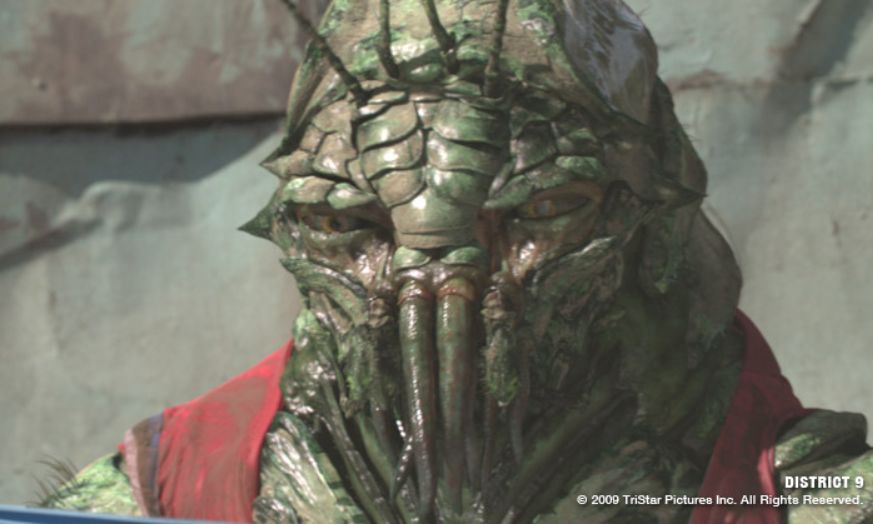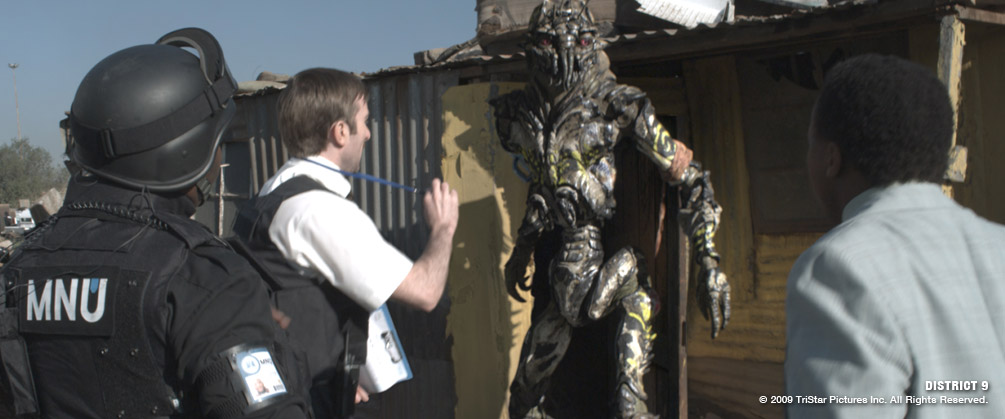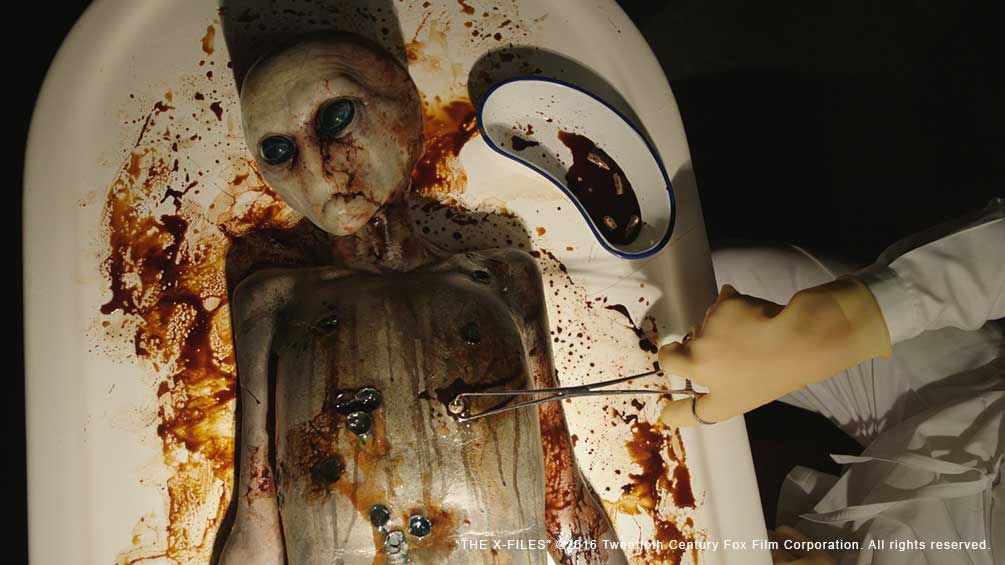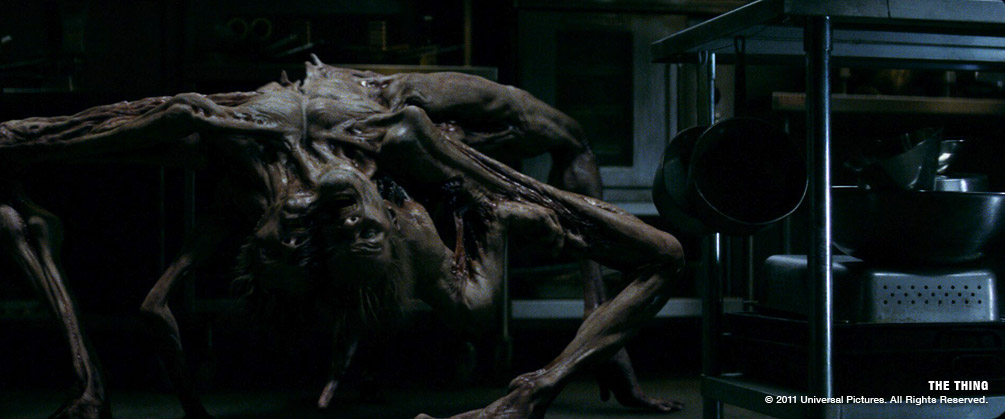SXSW 2017 – Creature Creation: Dissecting Extraterrestrial VFX

Insights
Inspired by his recent talk at SXSW, we caught up with one of the creators of these otherworldly beings – Shawn Walsh, visual effects executive producer and general manager – to learn how Image Engine brings life to CG extraterrestrials.
By Shawn Walsh | April 10, 2017
Popular culture owes a great deal to little green men.
Over the years, creations like Steven Spielberg’s E.T., Ridley Scott’s Xenomorph, and George Lucas’s Yoda (to name but a few) have been etched into our collective imagination, influencing thousands of stories that wander beyond the edges of understanding.
Extraterrestrials have invaded us, scared us, asked us to contemplate our futures, and been our saviours. And even today – when digital effects have almost entirely overtaken the practical creations of days gone by – these fictional aliens continue to teach us about ourselves. Indeed, the intricate complexity of today’s visual effects means these lessons are more deeply imparted than ever: be it through our interactions with a new race, or in the humanity that flashes across an alien’s eyes,
Inspired by his recent talk at SXSW, we caught up with one of the creators of these otherworldly beings – Shawn Walsh, Image Engine’s visual effects executive producer and general manager – to learn how the Vancouver-based studio brings life to such digital creatures.
From District 9 to X-Files, Independence Day and The Thing, Shawn reveals that along with sophisticated artistry and powerful technology, overarching thematic elements play an important part in the development of these visitors from another world.

Humanizing aliens – District 9
“Our best-known work at Image Engine is that on Neill Blomkamp’s District 9 – we worked on the alien “Prawns”, who arrive in a mothership that hangs over Johannesburg. Never before had a lower-budget sci-fi feature attempted complex creature animation on the scale of District 9. However, the work was about more than realistic textures: we wanted the audience to feel empathy for these ugly creatures from another planet. We needed to humanize them!
“A fun fact: the original alien design was more akin to a frog, but we realized that to map a readable performance onto the character we needed a more emphatic, direct connection to the underlying performance. We investigated all manner of reference imagery that we had in our library, and set upon the idea of overlapping, arachnid-like plates. They emphasized the area around the eyes – hugely important when it comes to conveying emotion.
“The result was that audiences could see something deeper within these aliens; a creature that felt and emoted, rather than something to be discounted as little more than an animal. There’s a sense intelligence beneath the prawn-like facade.
“The narrative of District 9 would not have been possible without the latest in visual effects. The technology enabled a subtlety and a nuance to alien effects that delivered not just on exciting visuals, but on an emotional core to the overarching narrative.”

VFX as a narrative tool – The X-Files
Visual effects are a narrative tool, as much as a script or acting. They uncoil the storytelling that sits at the core of the filmmaking process. Our work on The X-Files is a great example of this. Image Engine was brought on board to create the extraterrestrials encountered by Mulder and Scully. The key proposition here was to give the fans what they wanted: a classic throwback to the alien ‘greys’ they’ve known and loved.
In creating these ‘digital greys’ we had to nail the quintessential look people remember, while also making sure they felt fully believable. If the visual effects feel out of place, then they’re not serving the story. In creating the aliens we would add small details, like animating the mouth and nose moving as the creature exhaled and matching the CG creation to the live action surroundings, using subtle surface definition, reflections, and textural aspects like alien blood.
The standout moment for our digital alien creation was in the pivotal moment when we morphed between it and Scully. We added lots of subtle effects here, like a ripple of ink that passes through Scully’s eyes just before the morph kicks off.
These moments come and go on the screen; they’re incredibly subtle, but they’re there, and the amount of thought poured into them is immense. Subconsciously, these effects add up; they’re integral to the narrative process.

VFX as metaphor – Independence Day: Resurgence
Independence Day’s extraterrestrials are very different from the Greys of The X-Files – their exoskeleton battle suits feature spindly legs, whipping tentacles, and a large crest of a head. An iconic feature of the practical alien effects from the 1996 film is the way that the exoskeleton heads split open, revealing the alien ‘pilots’ hidden inside.
We worked on one key scene where this happens in Independence Day: Resurgence – a Colonist alien is attacked by a machete-wielding character, causing the exoskeleton to split open. Our artists had a bunch of fun detailed the oozing, gelatinous inner membranes and anatomy of the invaders, but they also worked to convey the powerlessness of the exposed creature inside. We sold the idea that these massive, formidable creatures had a hidden vulnerability – something key to the film’s overall story arc.
That sequence went beyond showing off cool visual effects. The animation and movement of the alien pilot as it struggled across the floor told a deeper, metaphorical story about these creatures – they’re imposing and scary, but they’re vulnerable.

Viscerally digital – The Thing
In 2010 we worked on Matthijs van Heijningen’s prequel to The Thing. John Carpenter’s 1982 film was truly amazing, and the practical effects blew all of our minds – for many artists at Image Engine, it’s part of the reason they work in visual effects today. For the prequel, however, we wanted to take the alien work to a new level using visual effects.
The Thing, and the transformations it causes are an example of the subtext of bodily invasion, infection, penetration, and loss of control. One of the scenes that highlights this psychological horror is a scene we called the ‘face merge’, whereby the alien merges with another human being in a creepy pseudosexual encounter.
We wanted to trigger a deep sense of repulsion and dread in the audience – which, today, is no easy thing. We were given some interesting artistic reference from Heijningen to match to, such as a face being punched in slow motion. Using that, we deformed the face, pushing it and pulling it in very precise yet unnatural ways.
Using today’s visual effects tools we could contort and manipulate the facial elements beyond anything possible in the physical world. We could create a sense of revulsion that spoke to something deeper and more primal in the audience. It wasn’t a story told in words, but a visual, visceral approach, complementing the core horror of the film.

